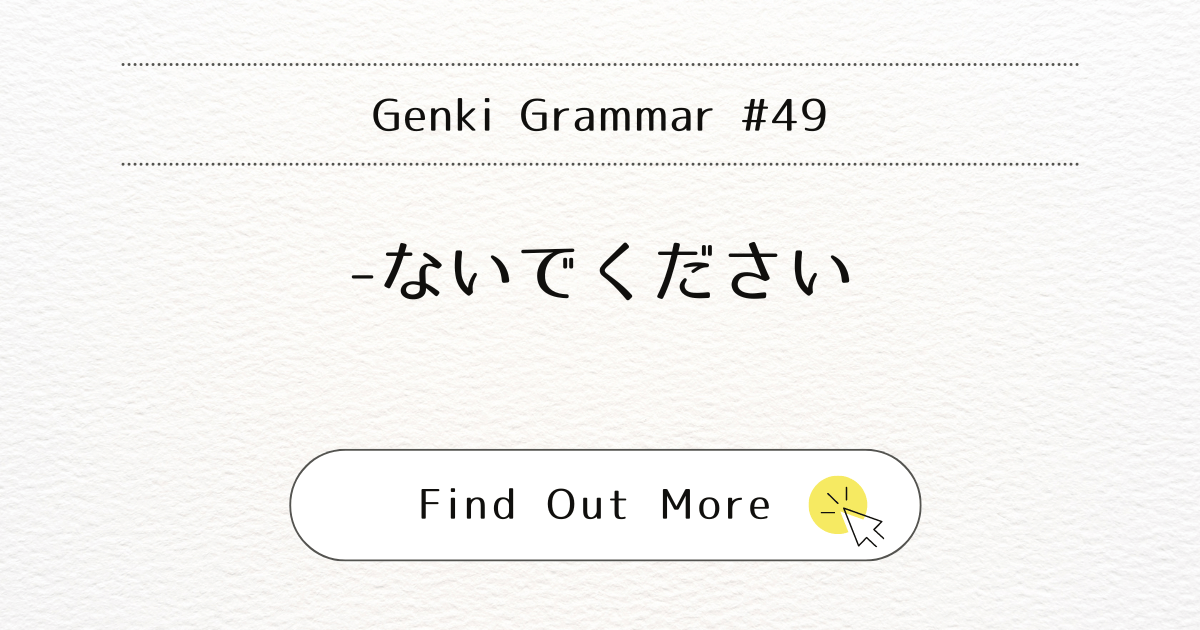
Introduction
In this blog, we will learn how to politely ask someone not to do something using the structure -ないでください (-nai de kudasai). This phrase is useful for requesting that others stop doing certain things.
What It Means
The structure Verb (short, negative) + でください (-nai de kudasai) means “Please don’t…”. It is a polite way to ask someone not to do something.
When You Use It
You use -ないでください when you want to request someone not to perform a certain action. This structure is often more polite and less authoritative than -てはいけません (-te wa ikemasen), which means “You must not…”.
Examples
ここで写真を撮らないでください。 (Koko de shashin o toranai de kudasai.) – Please don’t take pictures here.
ドアを開けないでください。 (Doa o akenai de kudasai.) – Please don’t open the door.
Note
-ないでください (-nai de kudasai) is often a better response to a てもいいですか (-te mo iidesu ka) question compared to -てはいけません (-te wa ikemasen), which can sound more commanding.
Example Dialogue (between classmates):
- A: これを使ってもいいですか。(Koko o tsukatte mo iidesu ka.) – May I use this?
- B: 使わないでください。(Tsukawa nai de kudasai.) – Please don’t.
Compare: 使ってはいけません。(Tsukatte wa ikemasen.) – You must not use. (Implies authority)
Conclusion
Using -ないでください (-nai de kudasai) is a polite and effective way to request that someone refrain from doing something. It is a softer and more considerate alternative to -てはいけません (-te wa ikemasen).



